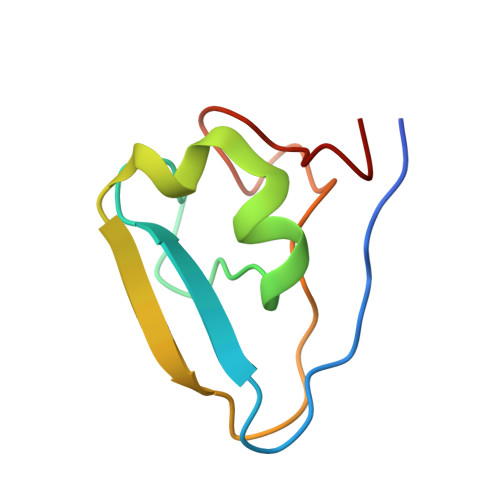Structural basis of substrate recognition and specificity in the N-end rule pathway.
Matta-Camacho, E., Kozlov, G., Li, F.F., Gehring, K.(2010) Nat Struct Mol Biol 17: 1182-1187
- PubMed: 20835242
- DOI: https://doi.org/10.1038/nsmb.1894
- Primary Citation of Related Structures:
3NY1, 3NY2, 3NY3 - PubMed Abstract:
The N-end rule links the half-life of a protein to the identity of its N-terminal residue. Destabilizing N-terminal residues are recognized by E3 ubiquitin ligases, termed N-recognins. A conserved structural domain called the UBR box is responsible for their specificity. Here we report the crystal structures of the UBR boxes of the human N-recognins UBR1 and UBR2, alone and in complex with an N-end rule peptide, Arg-Ile-Phe-Ser. These structures show that the UBR box adopts a previously undescribed fold stabilized through the binding of three zinc ions to form a binding pocket for type 1 N-degrons. NMR experiments reveal a preference for N-terminal arginine. Peptide binding is abrogated by N-terminal acetylation of the peptide or loss of the positive charge of the N-terminal residue. These results rationalize and refine the empirical rules for the classification of type 1 N-degrons. We also confirm that a missense mutation in UBR1 that is responsible for Johanson-Blizzard syndrome leads to UBR box unfolding and loss of function.
Organizational Affiliation:
Department of Biochemistry, McGill University, Montreal, Quebec, Canada.















